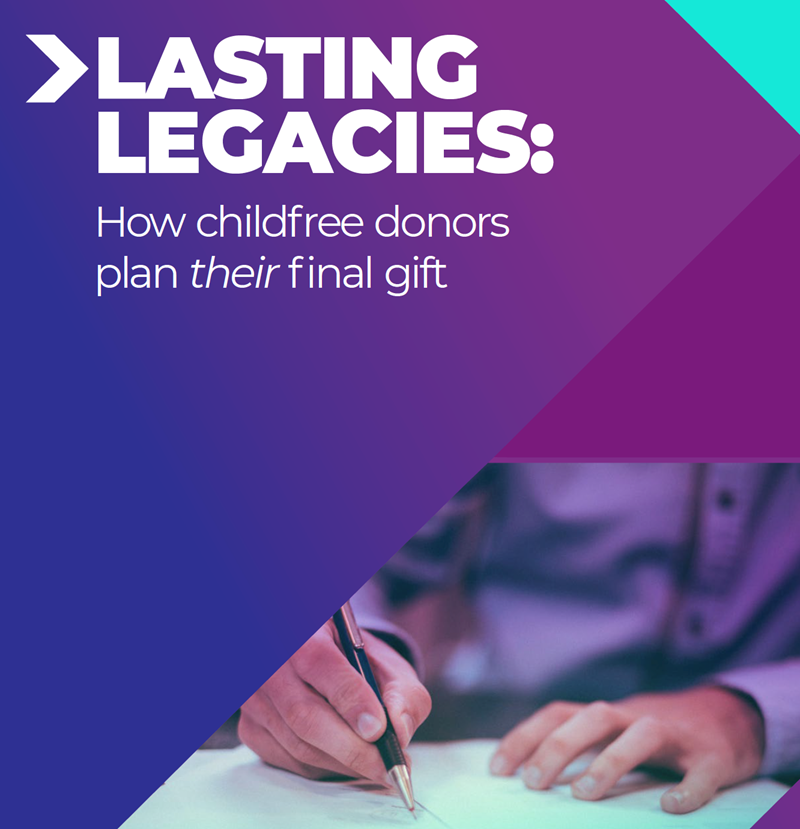Childfree donors revealed
in new WPNC research

The agency’s latest report, Lasting Legacies: How Childfree Donors Plan Their Final Gift - created in conjunction with digital fundraising platform goDonate - has been published following in-depth interviews with childfree donors (see ‘Notes to Editors’ for methodology). They reveal their attitudes towards charitable causes during their lifetime, as well as their motivations for leaving a legacy.
Given the increase in individuals and couples declaring themselves childfree, WPNC set out to understand how likely this audience segment is to donate via a legacy, and what lies behind the choices they make.
Data shows childfree people are more likely to leave a gift to a charity in their Will. Just 8% of Britons aged over 50 who have children do so - but that number rises to 24% for those without children (source: Legacy Foresight).
WPNC’s study reveals some key differences between donors who have children and those who don’t. These include: a desire to spend time making an impact during their lifetime, which makes them particularly aware of - and engaged with - charities; a willingness to donate more while they are alive, without children to leave their estate to; but also an eagerness to designate a legacy to “complete their life’s work”.
With this in mind, the report covers five key ways charities can bolster fundraising strategies to specifically engage childfree donors:
- Instant impact. Perceived wisdom around fundraising speaksto communicating impact in the long term. But perhaps for childfree audiences that’s less important. Understanding the specific and immediate impact of the gift on their death rather than vaguer, longer-term goals is appealing. They also need certainty their gift will make an immediate impact, and definitely not be wasted.
- Life’s legacy. This audience displays a desire to finish their charitable actions at the point of their death: not a long-term impact, but a conclusion to their personal mission.
- Control counts. Pushing into their focus on the here and now, a sense of control could be powerfully motivating. After all, this group is more likely to be making decisions about legacies today rather than waiting until they are much older. One option is asking for restricted gifts that can be spent immediately upon death.
- Before death. This audience could be encouraged to discuss their legacy intentions with friends and family. This would help realise the impact of their legacy while they’re alive. They also want to witness a conclusion to the impact of their actions.
- Free Wills. These are an important option – directly appealing to childfree people on the database. The more communication around estate and death planning happens, the more it creates opportunities for a conversation around Wills and legacies beyond the standard gifts to family
Gail Cookson, Legacy and International Marketing Director, WPNC, said: “Childfree lives have recently come to the fore with some high-profile celebrities and media personalities alike sharing their experiences of choosing not to have a family. It is an issue that divides opinion across society – and also has implications for charities’ fundraising strategies.
“These potential donors are planning to make a specific and intentional impact with their estate; whether that’s acts of charity around people they know, or to provide for animals like those they’ve cared for, or contributing to the missions of a specific charitable organisation that’s personal to them.
“The five key takeaways from our research raise crucial questions for legacy fundraisers. How best can they use this unique insight to engage an increasingly prominent donor audience to discuss leaving a gift in their Will?”
To find out more about this insightful report, please contact Gail Cookson